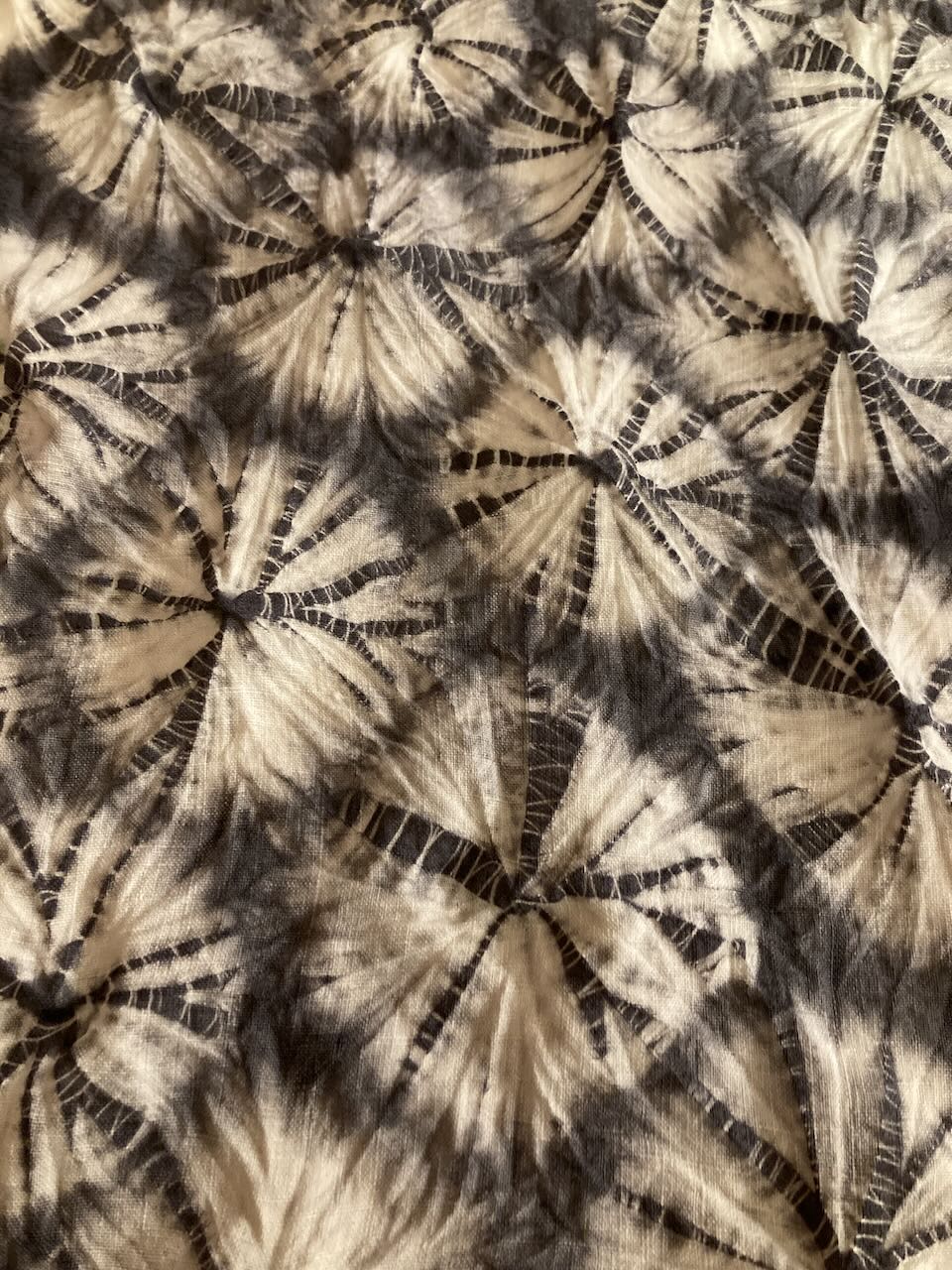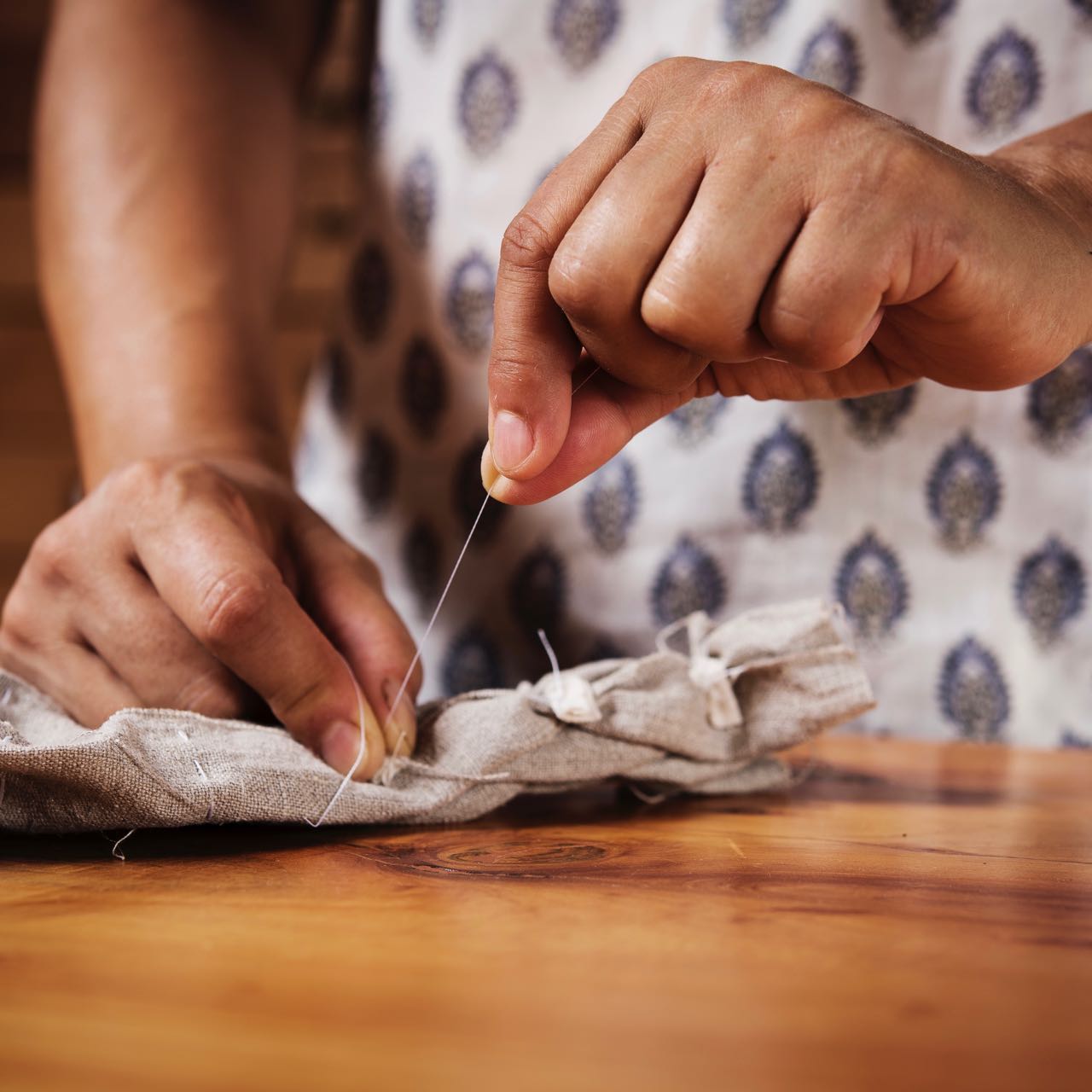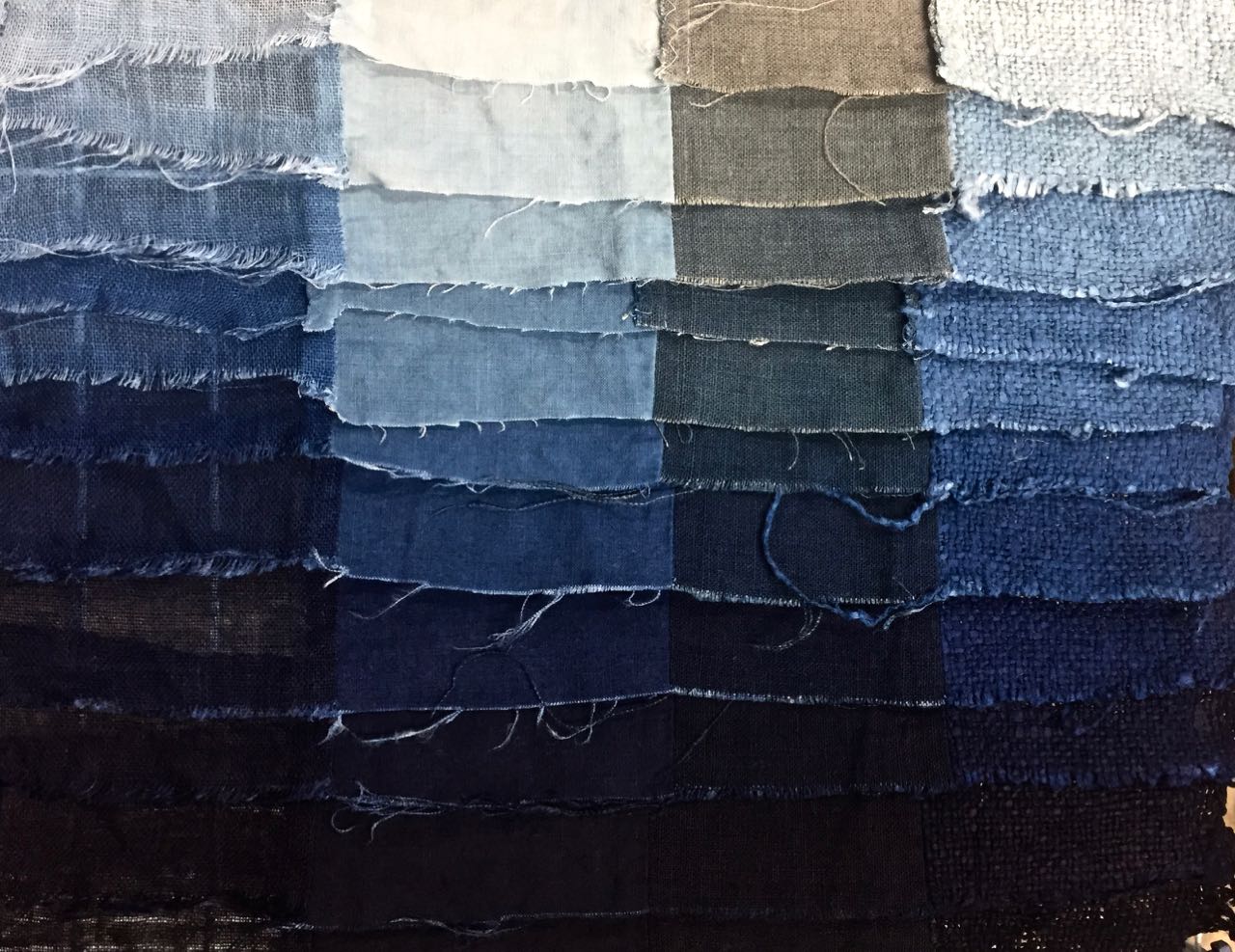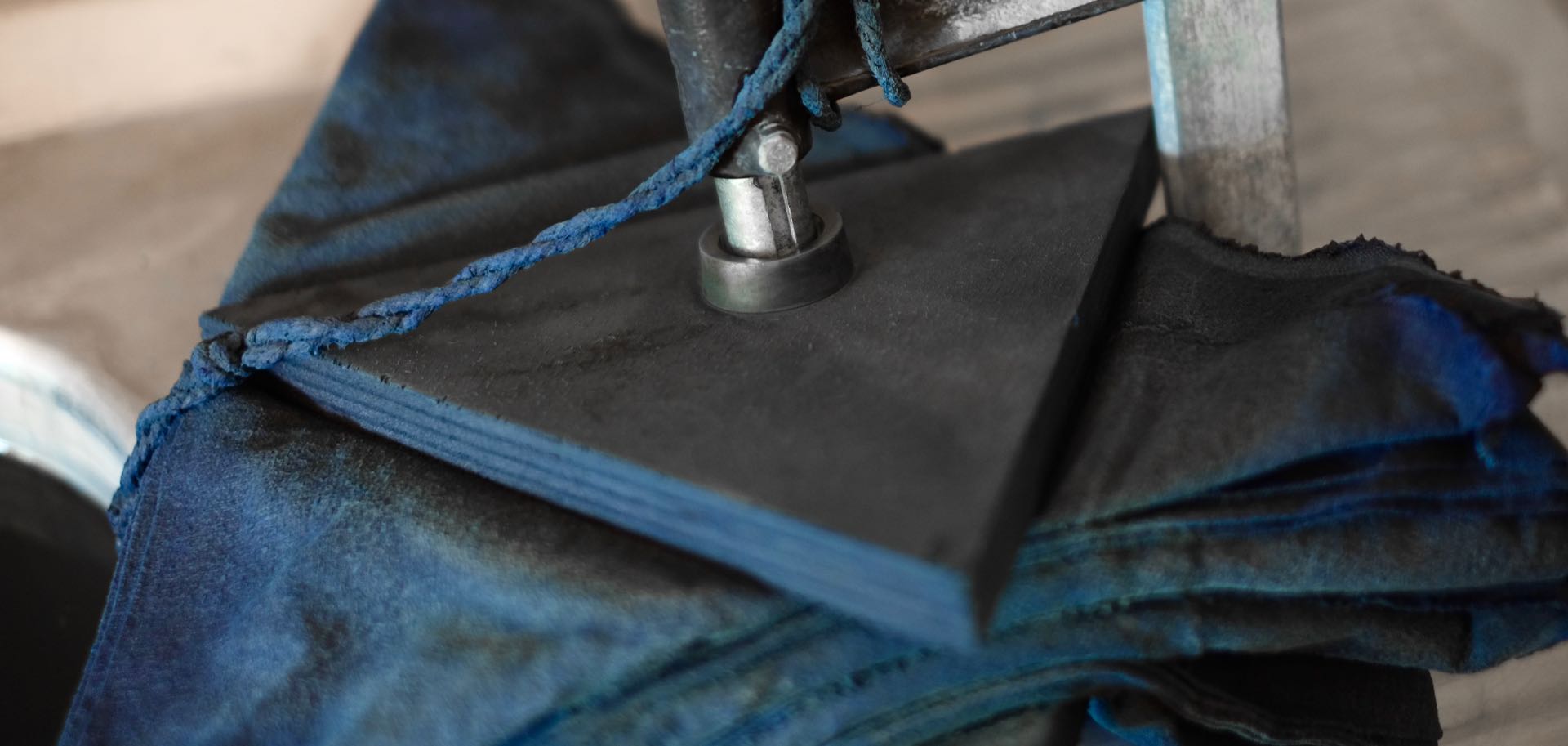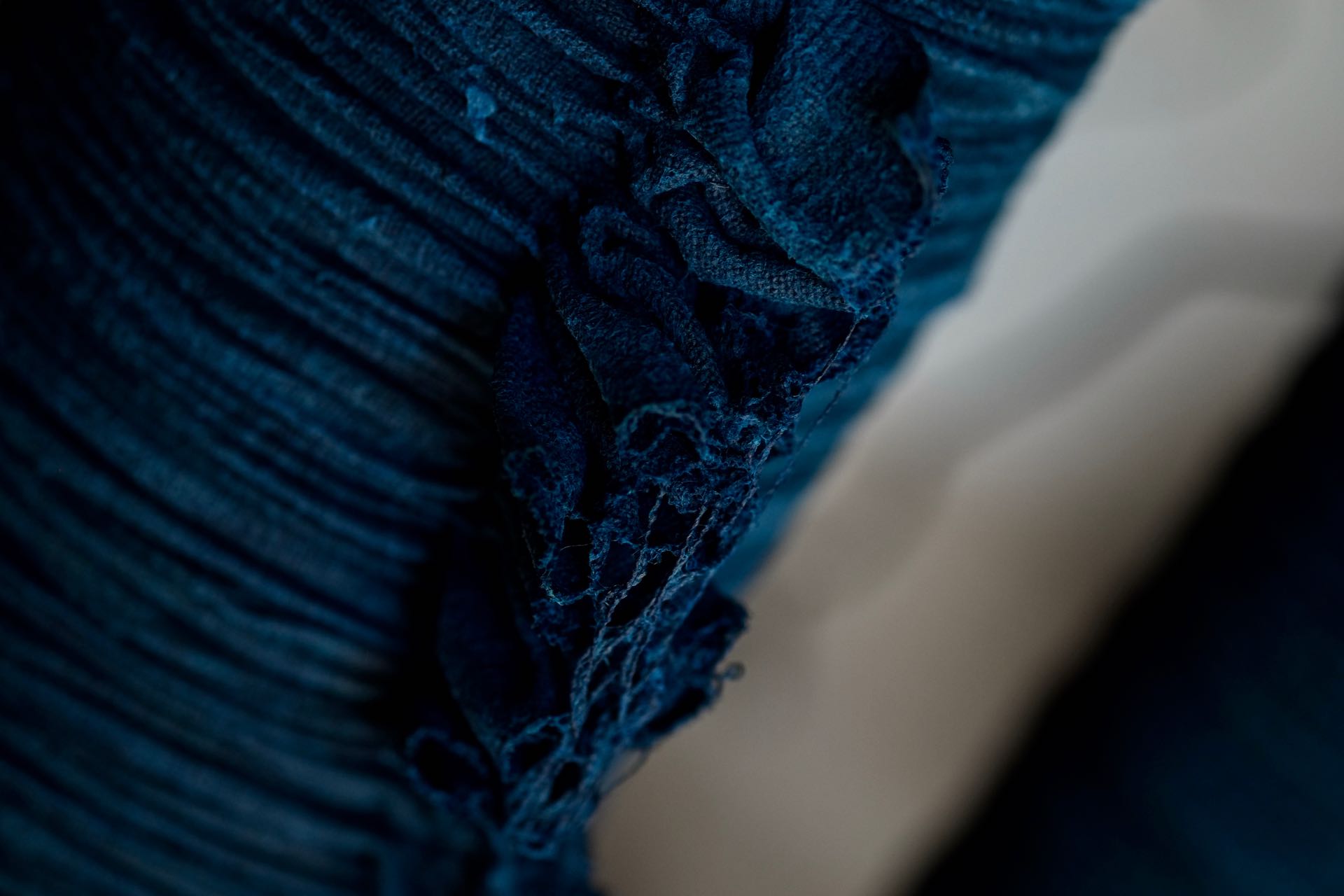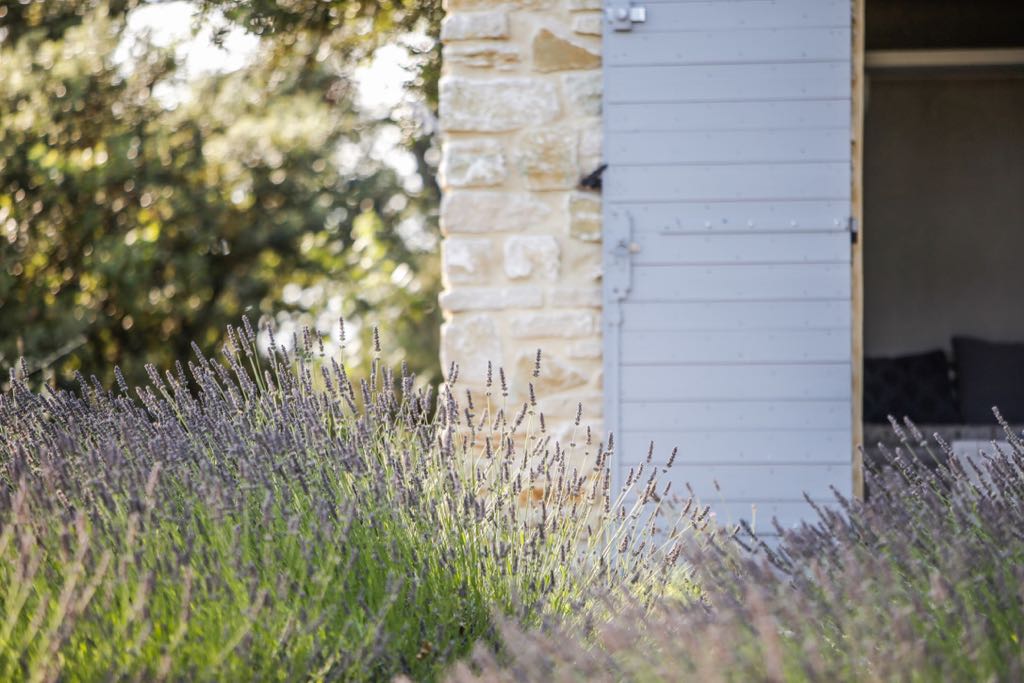I love this pattern, it's irregular regularity and strong contrast. Every line is made by squeezing the fabric in small folds. Those folds are created by small stitches running perpendicular to the lines. A very long process, but once the rhythm is found, I love the...
Process
Tegumo shibori
Tegumo shibori is a type of tied resist developed in Arimatsu, Japan, where I had the chance of training with master Kuno-san from Kuno Studio (see blogpost in process here) During the Edo period, the busy Tokaido route saw the flourishing of trade. Arimatsu's...
Nuishibori
Nuishibori is a name used in Japan for all reserve techniques where stitching and tying is involved. It is a fascinating world I am starting to explore, and I find that applying it to our typically French fabrics created a wonderful cultural melting pot. Stitching and...
Indigo dyeing
In the world of natural dyes, indigo has a place on it's own. Unlike other dyes, it does not need mordanting and can be applied to the fabric straight after scouring. However, it is still very labour intensive, and patience is still of essence here. The dye is applied...
Itajime shibori
Itajime shibori is another reserve technique used to create patterns. This time the fabric is folded and pressed between two pieces of wood. The folds, along with press placement, lead to a variety of patterns. I am always in awe with the magic of those geometric...
Arashi shibori
The Arashi pattern is created by tying a piece of cloth very tightly around a cylinder and then crumpling down the fabric to form little creases. It is one of the numerous reserve techniques used in Japan grouped under the shibori term. The tradition was to use a very...
Katazome and processing the lavender crop at la Baye des Anges
The lavender field at la Baye des Anges, is the source and inspiration for the lavender pouches production. We planted this field in 2013, and ever since the first crop, we have been enjoying the powerful fragrance all over the house.
Block printing
Block printing is a technique used to create patterns by stamping shapes cut out of wooden blocks. The blocks are previously impregnated either with concentrated mordant, or with mild acid that erases the mordant pre-existing on the fabric. This creates either a...


